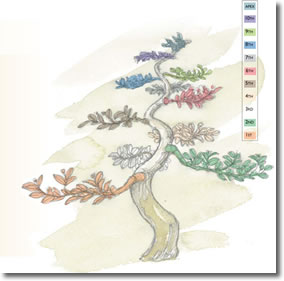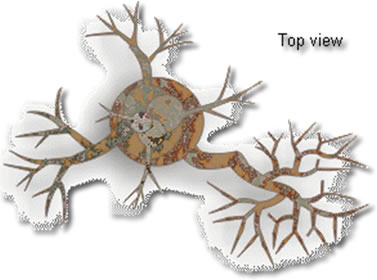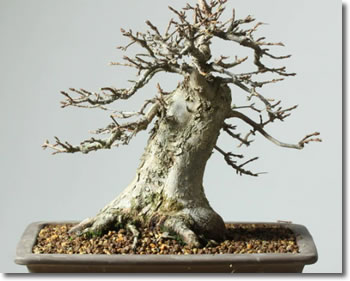Trunks and branches are the essences of the bonsai tree. Trees are three-dimensional. This sounds obvious, but one mistake novices often make is to arrange the branches so that the bonsai tree looks reasonable from a particular viewing side, but does not have enough branches for symmetry, to the front or the rear.

The trunk is trained and always shown to advantage, and then the branches come into their own in setting off the completed bonsai.
* The first branch may be either on the left or the right but should come slightly forward.
* The second branch should be on the opposite side, also coming slightly forward.
* The third branch should be to the rear, to add a dimension of depth to the composition as a whole.
In their quest for air to breathe, and sunlight for photosynthesis, the trunks of trees grow longer and larger as they perform their functions of sustaining leaves, flowers, and fruit.
The very essence of the bonsai is the tree’s trunk and branches. The trunk can be trained into the way you want the trunk to grow and to show off, the branches of the tree come into their own in setting off the completed Bonsai.
The rules that govern branches
1. The lowest branches should be the thickest, and they become progressively thinner as they proceed up the length of the trunk.
2. Branches should be more widely spaced at the bottom of the tree and should grow closer and closer together towards the top.
3. On a curved trunk, branches should always emerge from the outer edge of the curve, never from the inside of the curve.
4. No two branches should emerge directly opposite each other. This creates an undesirable ‘handlebar’ effect which immediately stops the eye from traveling up the trunk.
5. Branches should always harmonize with trunks. Straight trunks must have straight branches and curved trunks, curved branches.

This pattern is followed right up the trunk, with front branches being introduced at about two-thirds of the trunk height, or higher. Keeping the lower part free of forward-growing branches keeps the trunk within view. If the trunk is lost to view the bonsai will look more like a shrub than a tree.
After learning the basic rules, we need to apply them. You will notice it is practically impossible to stick to all the rules unless you start with a seedling. Try to stick as closely as possible to the rules. These rules, however, are not set in stone; they are guidelines that should lead you to the creation of a near-perfect bonsai. There are several methods by which you can achieve the same result by using a little imagination and ingenuity. Don’t ever think that you should sacrifice your creative sensibilities for the sake of adherence to a set of arbitrary rules.
Branch ramification

